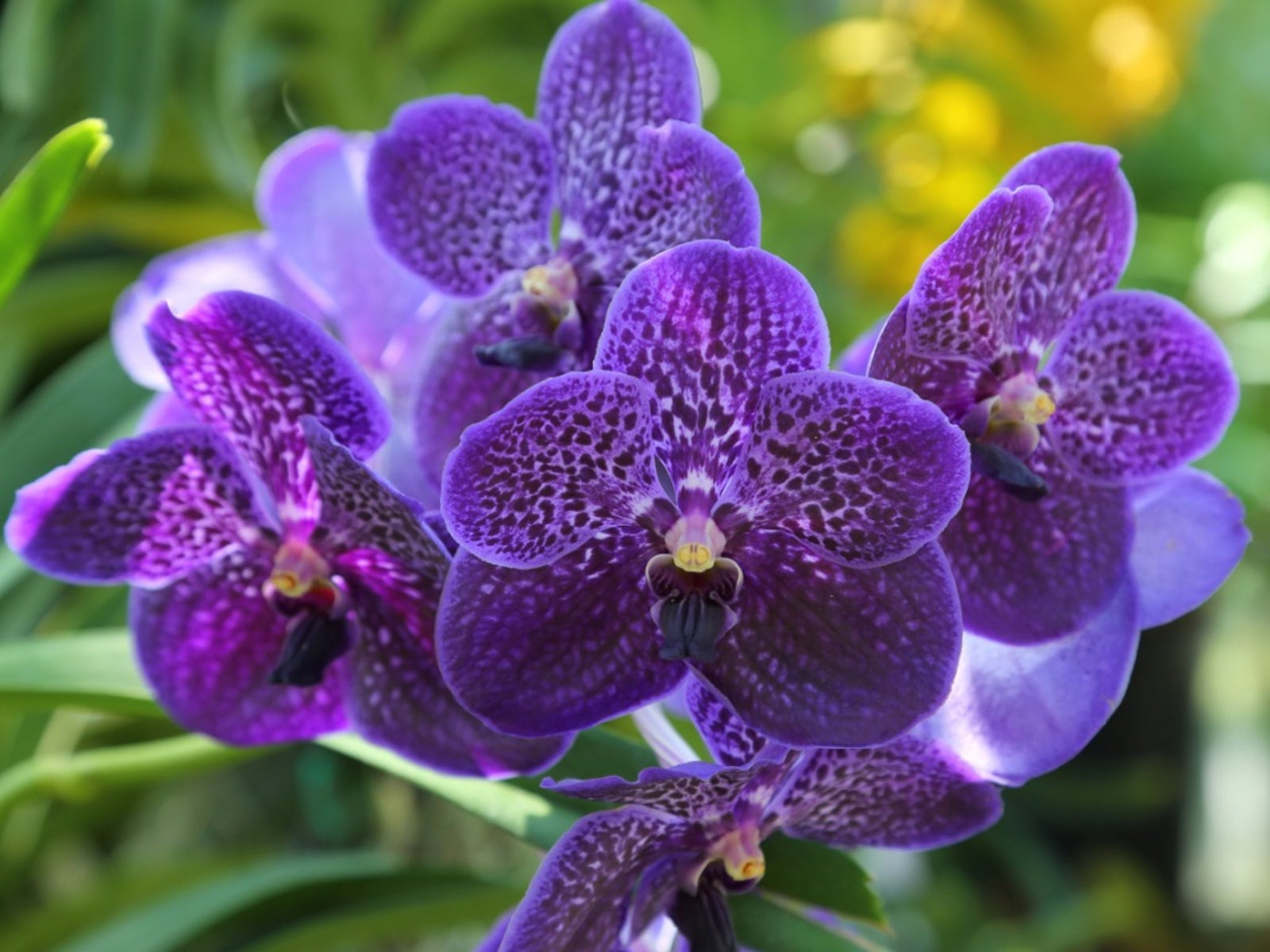Vanda Orchid Propagation: Tips On Dividing Vanda Orchids


Native to Southeast Asia, Vanda is a spectacular orchid that, in its native environment, grows in the dappled light of sunny tree tops. This genus, primarily epiphytic, is loved for its long-lasting, sweet-smelling blooms in intense shades of purple, green, white and blue. Aerial Vanda orchid roots make Vanda orchid propagation a very doable task. If you’d like to know how to propagate Vanda orchids, read on.
How to Propagate Vanda Orchids
While there may be various orchid propagation methods, the surest way to accomplish Vanda orchid propagation is to take a cutting from the tip of a plant with a healthy system of aerial roots. Look closely at the plant and you can see white Vanda orchid roots growing along a stem. Using a sharp, sterile knife, cut several inches from the top of that stem, making the cut just below the roots. Generally, it’s easiest to make the cut between sets of leaves. Leave the mother plant in the pot and plant the newly removed stem in a clean container filled with potting mix formulated specifically for orchids. Never use standard potting soil or garden soil, which will kill the plant. Water the baby orchid thoroughly until water drips through the drainage hole, and then don’t water again until the potting soil feels dry to the touch. This is also a good time to get the Vanda orchid off to a running start with a light application of a water-soluble, 20-20-20 fertilizer or a special orchid fertilizer.
Dividing Vanda Orchids
Dividing Vanda orchids isn’t generally recommended for hobbyists and is typically a job best left to the experts because Vanda is a monopodial orchid, which means the plant has a single, upward-growing stem. Unless you really know what you’re doing, you risk killing the plant.
Vanda Orchid Propagation Tips
Spring, when the plant is in active growth, is the preferred time for Vanda orchid propagation. As a reminder, never divide a small orchid or one that lacks a healthy set of roots.
Gardening tips, videos, info and more delivered right to your inbox!
Sign up for the Gardening Know How newsletter today and receive a free copy of our e-book "How to Grow Delicious Tomatoes".

A Credentialed Garden Writer, Mary H. Dyer was with Gardening Know How in the very beginning, publishing articles as early as 2007.
-
 Looking For Plants To Give You The Soft And Fuzzies? Try These 5 Fuzzy Leaf Plant Options
Looking For Plants To Give You The Soft And Fuzzies? Try These 5 Fuzzy Leaf Plant OptionsLovers of texture, drama, silver foliage and tactile plants will adore these special sensory garden additions. These fuzzy leaf plant options will leave you all aglow
By Susan Albert
-
 Get Ready For A Summer Of Hummers! Grow These Full Sun Hummingbird Plants and Flowers
Get Ready For A Summer Of Hummers! Grow These Full Sun Hummingbird Plants and FlowersIf you’re lucky enough to enjoy a sunny backyard, make sure you are maxing out on your pollinator opportunities and grow these full sun hummingbird plants and flowers
By Tonya Barnett